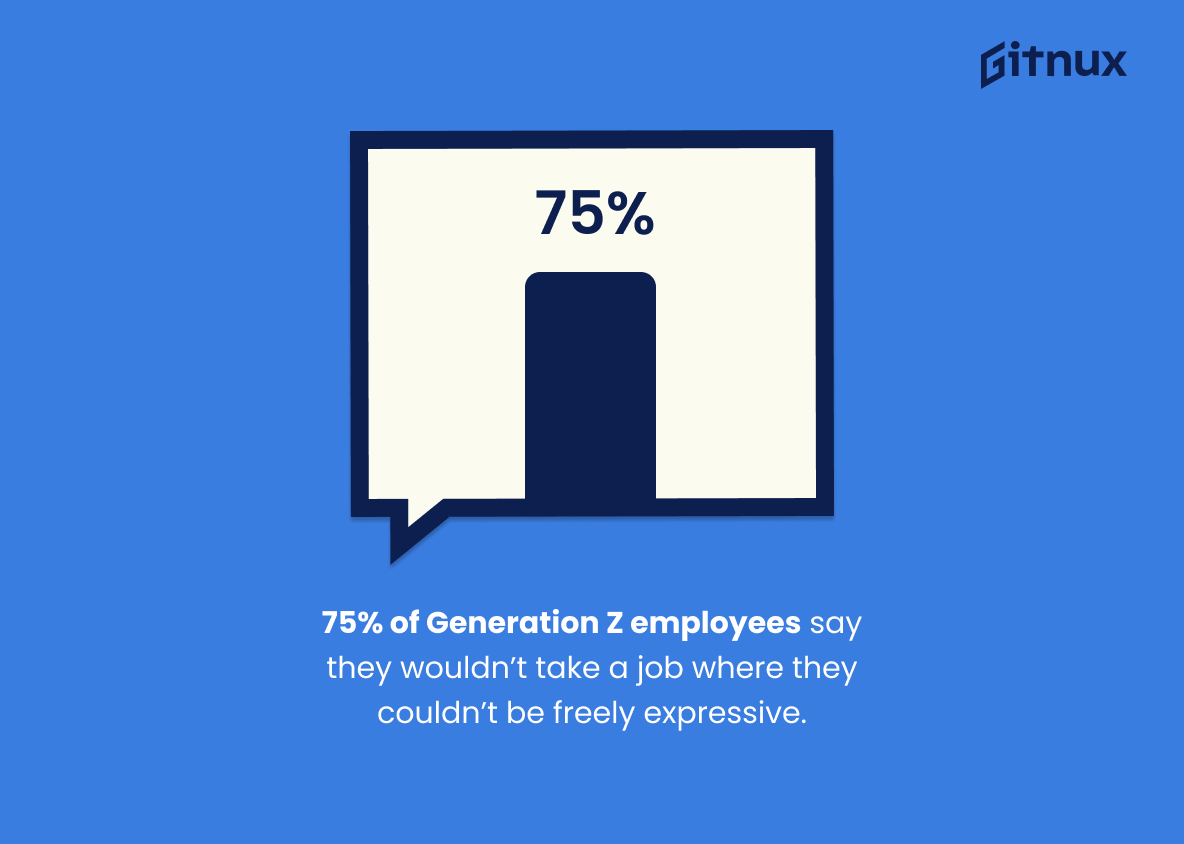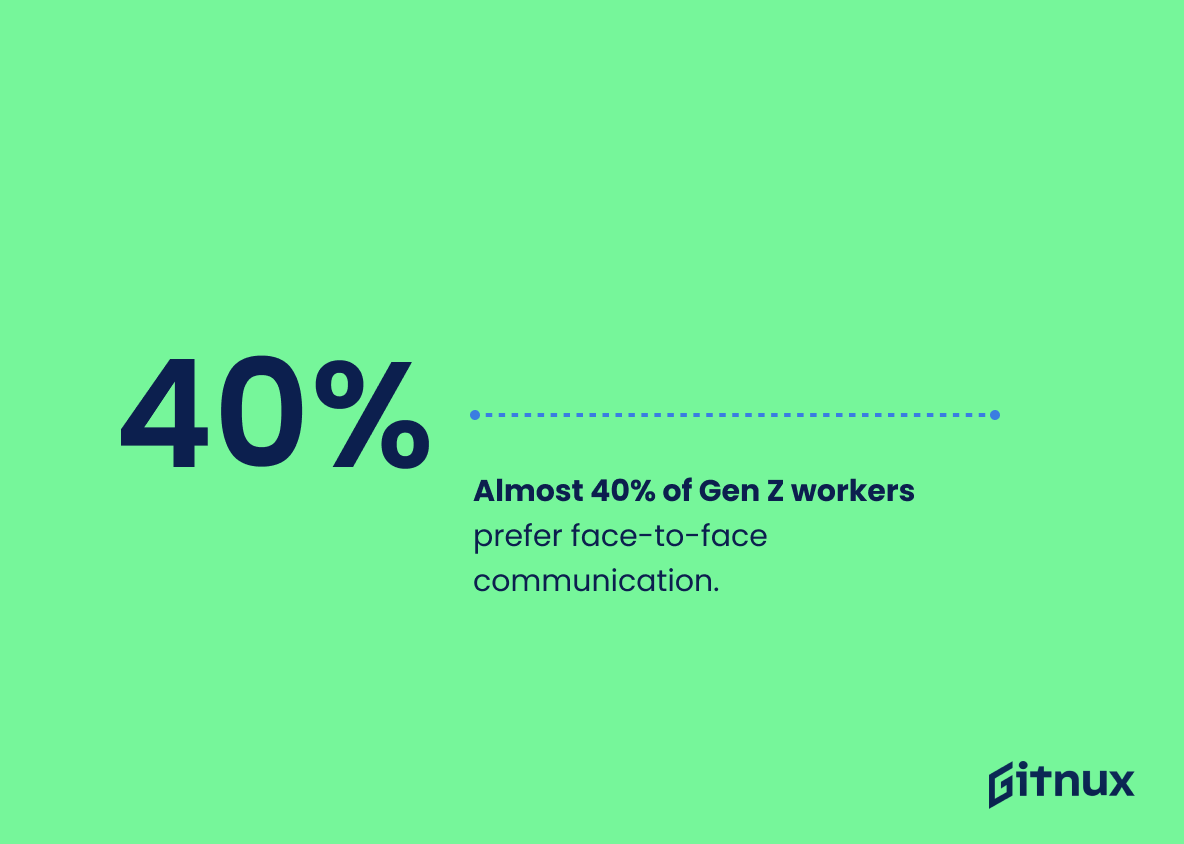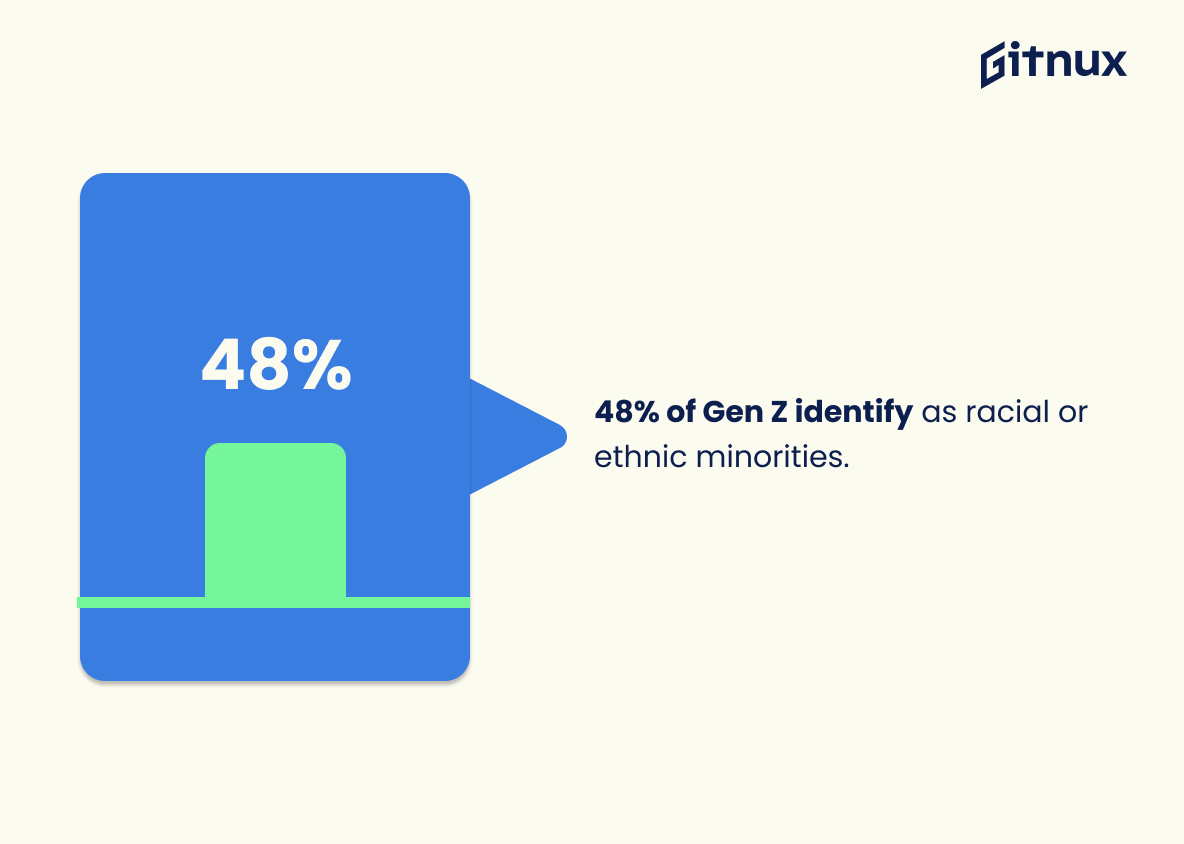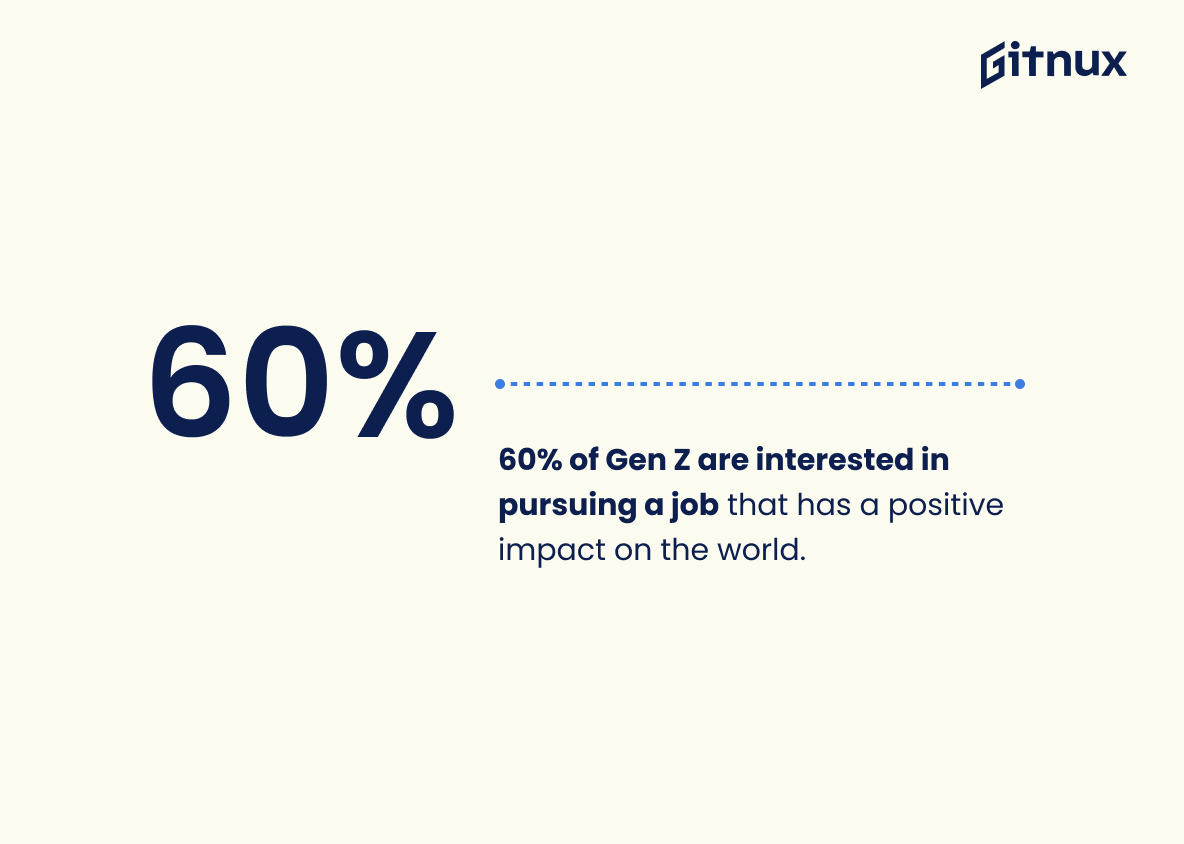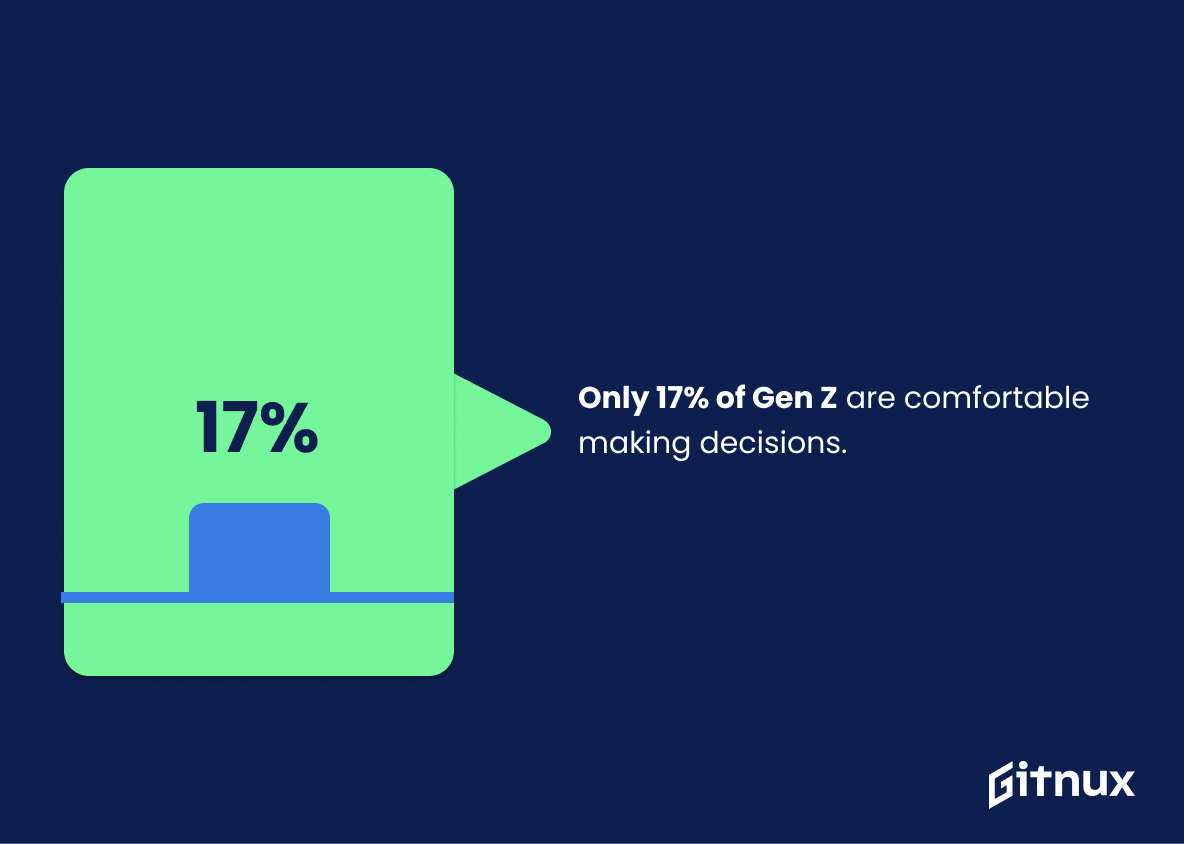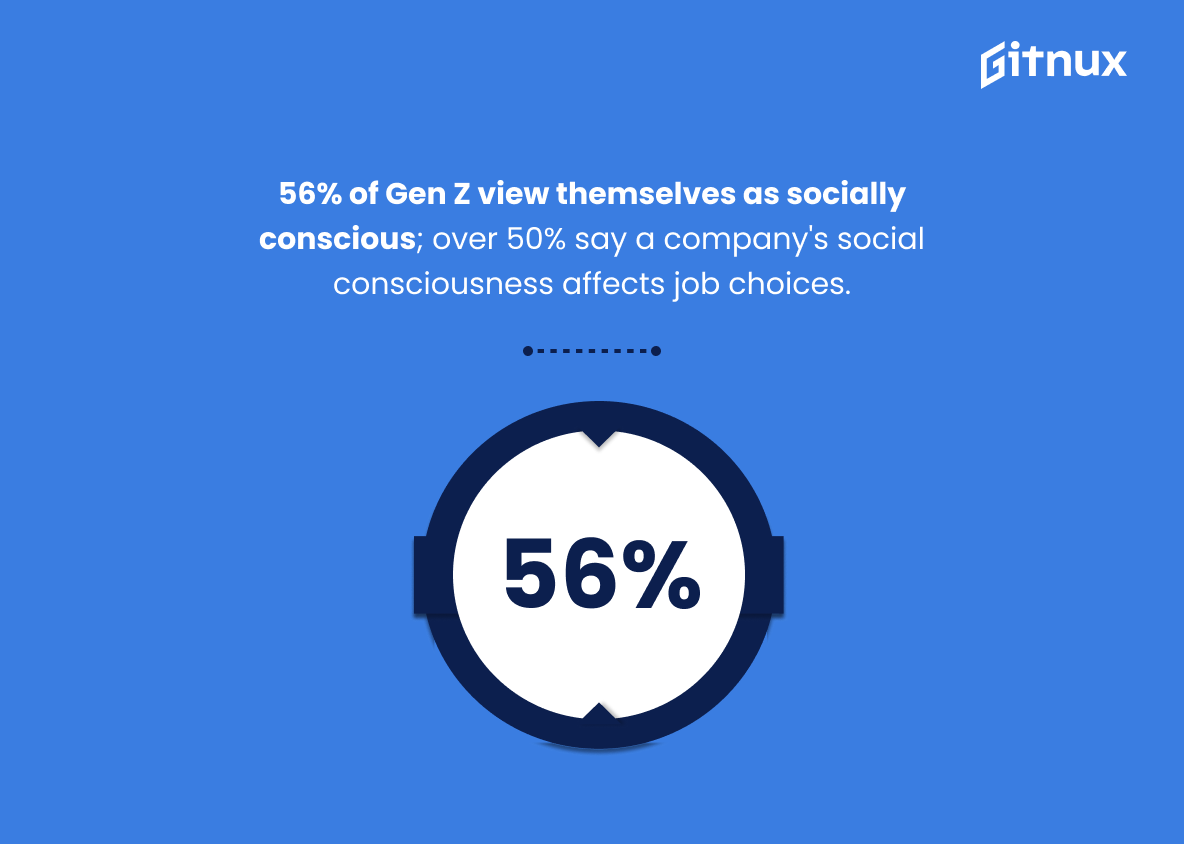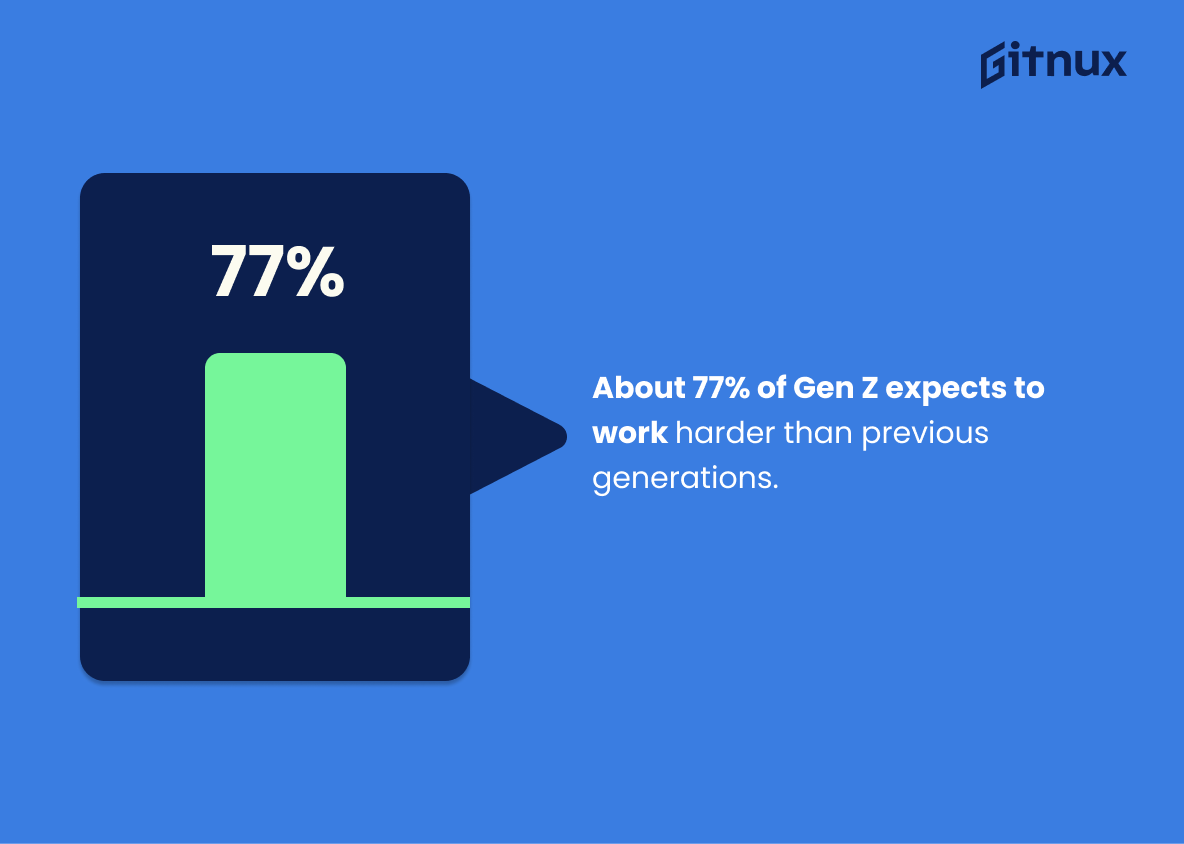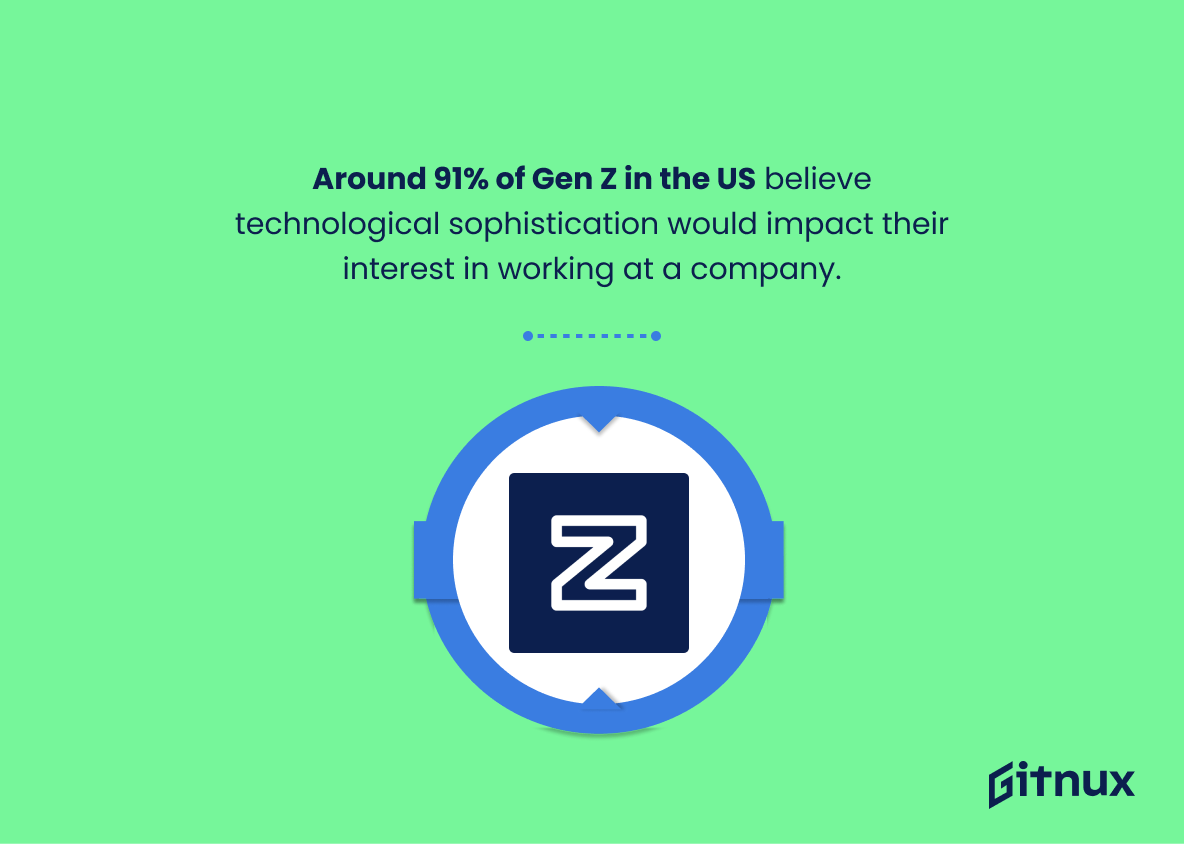Today’s job market is jostling with an exciting influx of fresh talent, fueled by the dynamic and tech-savvy Gen Z. This wave of new workers is making a colossal impact on modern businesses, proving that they are anything but passive bystanders. As an enormous demographic set to comprise over 30% of the workforce by 2030, understanding Gen Z is crucial for shaping the future of any business or industry. In this blog post, we aim to shed light on Gen Z workforce statistics. We will examine the pivotal role they play in the workplace landscape, as well as the distinct intricacies that differentiate them from previous generations. So, let’s delve in and decode what makes the Gen Z workforce an essential aspect of the evolving work ecosystem.
The Latest Gen Z Workforce Statistics Unveiled
61% of Gen Z said they would stay at a company for more than 10 years.
In exploring the landscape of Gen Z workforce statistics, one figure strikes as particularly informative: a substantial 61% of Gen Z reported they would commit to a company for over a decade. This proportion suggests a shift towards increased loyalty and longer-term career strategies within this generation, contrary to previous trends of job-hopping. For employers struggling with staff retention, this knowledge could act as a beacon, guiding their recruitment priorities and long-term planning. Similarly, it provides insight for human resource strategies, emphasizing the importance of creating workplaces that appeal to the long-term career trajectories of Gen Z employees.
75% of Generation Z employees say they wouldn’t take a job where they couldn’t be freely expressive.
Peering through the revealing lens of numerics, we find the bold character of Generation Z. A resounding 75% of these young professionals assert that a workplace suppressing their expressive freedom is a deal-breaker. Such a statistic is crucial for a blog post on Gen Z Workforce Statistics. They champion a culture that nourishes creativity and self-expression, setting them apart from earlier generations. Thus, any company aiming to attract this dynamic, tech-savvy, and purpose-driven workforce should consider fostering a culture that lets the expressive flag fly high. This statistic, then, isn’t just a number—it’s a clarion call for any company seeking to harness the potential of Generation Z and the revolution they bring to the modern workspace.
Almost 40% of Gen Z workers prefer face-to-face communication.
Uncovering the fact that close to 40% of Generation Z workforce leans towards in-person dialogue peels back the layers on prevalent stereotypes about this young, digitally native generation. It dispels the notion of them being exclusively glued to their screens, revealing a situation wherein the melding of traditional and modern communication methods takes place. In a blog post about Gen Z workforce statistics, it paves the pathway to discussing how this generation might shape future workplace communication norms. Moreover, it hints at the careful balance of virtual and traditional communication that companies need to maintain while managing a Gen Z workforce.
48% of Gen Z identify as racial or ethnic minorities.
Peering into this colorfully woven tapestry of diversity represented by the Gen Z workforce, it’s undeniable that 48% identifying as racial or ethnic minorities weaves an influential narrative. For businesses and employers, this vibrant diversity underlines the importance of fostering an inclusive work culture. In understanding and acknowledging this context, companies can tap into a wider range of perspectives and experiences, thereby sparking creativity and innovation. Furthermore, by mirroring the rich diversity of the customer base, businesses stand to improve their brand image and loyalty. Thus, this understanding becomes a core narrative in shaping workforce policies, recruitment and retention strategies that resonate with the Gen Z population.
59% of Generation Z respondents want feedback several times a week.
In the constantly evolving realm of the Gen Z workforce, capturing the finer details of their work ethic and expectations can be a critical strategy for employers. The insight that 59% of Generation Z respondents cherish receiving feedback multiple times a week paints a telling portrait.
This figure shines a light on Gen Z’s desire for consistent engagement and dialogue. It provides valuable context in understanding their work preferences, speaking volumes about their need for continual learning and growth. As we zero in on the Gen Z workforce, this statistic emerges as a vital compass guiding the design of their workspace environment. It speaks to their desire for an engaged and communicative approach to management, where regular feedback is seen as a way to foster development and improve performance.
Delving deeper into statistics such as these is crucial in understanding the nature of the modern, malleable, millennial-centric workplace willing to adapt to the distinct needs of the emerging Gen Z workers.
76% of Gen Z is concerned about affording college.
Unveiling an intriguing perspective, the statistic underscores the sobering reality that a striking 76% of Generation Z harbor concerns about college affordability. This remarkable numerical revelation speaks volumes about the economic challenges Generation Z faces, coloring their view of education and their future careers. Within the discourse of Gen Z Workforce Statistics, this fact creates a unique lens for the ongoing dialogue, shining a spotlight on the gravity of how present economic issues may shape(and reshape) the career choices and employment trajectory of this upcoming generation. Coupled with an understanding of this generation’s values and aspirations, this statistic invites a deeper exploration of how workforce dynamics and structures may need to evolve in response.
By 2025, Generation Z will make up 27% of the workforce.
Consider this: With Generation Z anticipated to account for 27% of the workforce by 2025, the landscape of the employment market is about to undergo a significant metamorphosis. It’s as if we are peering into a crystal ball, revealing a shift from past workforce demographics towards a future heavily influenced by the values, ambitions, and abilities of Gen Z.
Such dramatic evolution provides an impetus for businesses, educators, and policy-makers to delve into the mindset of this tech-savvy, socially-conscious generation, and adjust their tactics accordingly. From recruitment strategies to office culture and managerial styles, understanding workforce composition through statistics allows for a more sustainable approach to adapt to the forthcoming wave of Gen Zers.
This 27% majority on the horizon is much more than just a statistic—it embodies a future of innovation and change, a clarion call to adapt and flourish alongside Generation Z and their prominent role in the professional world of tomorrow. So, as they climb the career ladder, we too must step up, ready to understand, empower and shape a workforce environment that is not just accommodating, but worthy of their skills and potential.
60% of Gen Z are interested in pursuing a job that has a positive impact on the world.
In the nexus of Gen Z Workforce Statistics, the fact that 60% of Gen Z desire careers with a positive world impact carries commanding significance. For one, it directly elucidates what motivates this demographic in their job hunt, shedding light on their shifting priorities compared to previous generations. Furthermore, a discerning analysis uncovers profound implications for employers who are learning how to attract and retain this rising cohort in the labor market. Ultimately, it underscores Gen Z’s aspiration for gratification beyond just the paycheck, reaffirming their extraordinary desire to fuse personal values with professional pursuits.
Only 17% of Gen Z are comfortable making decisions.
Painting a vivid picture of the Gen Z mindset, this striking statistic highlights a potential challenge in cultivating autonomy and decision-making confidence within the evolving labor landscape. In a blog post scrutinizing Gen Z Workforce Statistics, this stat could shed light on areas for focused training and development as organizations aim to better leverage the unique strengths of their younger employees. It underscores the need for employers to empower Gen Z workers with tools, guidance, and experiences designed to bolster their decision-making prowess – a crucial capability in today’s fast-paced, complex business world. The statistic also invites a deeper conversation about why such a significant portion of Gen Z may hesitate in decision-making situations, opening avenues to explore factors such as educational environments, parenting approaches, technological influences, and societal shifts.
56% of Generation Z consider themselves to be socially conscious and more than 50% report that knowing a company is socially conscious influences their decision to work there.
In the canvas of Gen Z Workforce Statistics, the aforementioned figure swirls a fascinating narrative- it etches the portrait of a generation that doesn’t merely prioritize personal gain. With 56% of Generation Z affirming their social consciousness, it becomes apparent that this demographic is woke about social issues and conscientious in their endeavors. Furthermore, the fact that over half express that a company’s social consciousness sways their job choice unveils another layer of their socio-centric preferences.
Simply put, businesses intending to attract and retain this young talent force cannot ignore this trait. They must demonstrate sincerity towards social issues and reflect it in their policies and practices. In doing so, they not only woo the Generation Z workforce but also align themselves for a more equitable and sustainable future. This, ultimately, becomes a win-win situation both for the businesses themselves, and the socially conscious Generation Z.
More than half of Gen Z (54%) reported social justice and advocacy as a top contributor to their identity.
With over half of Gen Z affirming that social justice and advocacy play a major role in shaping their identity, this statistic serves as a compelling insight for corporations and HR managers trying to understand, attract, and retain Gen Z talent. It’s like a compass guiding to modify workplace culture and policies, reflecting the value placed on social equity and engagement among this generation. Hence, in terms of recruitment strategies and optimal work environment creation, this statistic behaves as a significant tool to tap into the mindset of this young, vibrant workforce.
83% Gen Z sees tech companies as the most attractive industries for job opportunities.
The statistic ‘83% Gen Z sees tech companies as the most attractive industries for job opportunities’ serves as a vital pulse check on the evolving professional landscape as perceived by the Gen Z workers. This meaningful data point not only showcases technology-based industries in a flattering light, but it also paints a vivid panorama of changing interests and perceived career prospects among the youngest working generation – the digital natives. It underscores the gravitation of Gen Z towards opportunities that resonate with their tech-savvy nature, embedded in an arena that is dynamic, progressive, and brimming with potential. This in turn prompts thought leaders, educators and companies to potentially pivot their strategies, acknowledging that to attract and retain this young talent, they’ll need to appeal to their high regard for the tech industry.
29% of Gen Z believes work-life balance is the most important factor when choosing an employer.
As we dive into the mind of Gen Z and open the book of their workforce ambitions, the statistic shedding light on 29% of them prioritizing work-life balance when selecting an employer emerges as a crucial chapter. This percentage serves as an important beacon, signaling a significant generational shift. It seeks to rewrite the narratives about Gen Z’s attitudes, showcasing the value they place on balance and personal time in their professional lives. This numerical voice of a generation helps us navigate through Gen Z’s vision for the work environment, crucially informing employers about what could draw or deter this future talent pool, shaping how businesses will mold their working dynamics in response.
About 77% of Gen Z expects to work harder than previous generations.
When delving into the mindset of the Gen Z workforce through statistics, the nugget that roughly 77% anticipate a need for more diligent labor compared to their predecessors is illuminating. This figure is a testament to Gen Z’s inherent understanding of an increasingly competitive professional landscape. It paints them as a generation eager to roll up their sleeves, push the envelope, and adopt a more industrious approach towards their career advancement. Hence, it holds powerful implications for employers planning strategies to attract, retain, and nurture this up-and-coming talent pool. This particular percentage provides a revealing insight into their ambitious mindset, setting the stage for an engaged, determined, and productive workforce that may well redefine workplace dynamics in the future.
Around 91% of Gen Z in the US believe technological sophistication would impact their interest in working at a company.
Understanding that a significant 91% of Gen Z in America have an affinity towards technology-forward companies is crucial when writing about the Gen Z workforce. This figure serves as a clear indicator that these digital natives place a high importance on technology, indicating that companies need to stay technologically advanced to stay appealing to this young demographic. This insight puts particular emphasis on the need for continuous technological growth and innovation in the business world, as major facets driving Gen Z’s employment choices. Without accounting for this prevailing preference, firms may find themselves outpaced in attracting this future driving force of the workforce.
74% of Gen Z prefer to communicate face to face at work.
In the vibrant tapestry of Gen Z workforce statistics, the fact that 74% of this generation prefer face-to-face interactions at work threads a compelling narrative. This datum paints a vivid picture that breaks the digital native stereotype often associated with them. Far from being aloof, screen-bound workers, Gen Z evidently values and craves personal interaction in their professional spheres. It shifts the corporate landscape, demanding an evolution in the largely digital and remote work setup widely adopted in recent times. It further amplifies the need for companies to weave in direct communication and interpersonal connection into their work culture to engage and retain this emerging workforce effectively.
Gen Z will make up 30% of the U.S. workforce by 2030.
Painting a vibrant picture of the future, it unfolds the magnitude of Gen Z’s role in shaping America’s labor landscape by 2030. The forecasted statistic—30% of the U.S. workforce populated by Gen Z—reflects a significant generational shift that is poised to redefine workplace norms, ethics, and dynamics. This slice of statistical insight is a keynote in our melody of discussion on Gen Z’s labor statistics, setting the tone for what to anticipate in the course of professional evolution. Essentially, catering to this burgeoning generation should be prioritized now more than ever, as their substantial representation will undeniably sculpt the contour of the American workforce’s image in the coming years.
Conclusion
In sum, the Gen Z workforce is here and reshaping the professional landscape. With their tech-savvy nature, desire for work-life balance, diversity, flexibility, and eagerness to contribute to positive societal change, this generation is redefining the norms of the workplace. They offer unique perspectives and significant potential to innovate and drive growth across various industries. Understanding the Gen Z workforce statistics presented in this blog post is crucial for businesses to attract, engage, and retain these young professionals effectively. As they continue to make their mark, the most successful companies will be those that adapt and align their operations and strategies to the needs and aspirations of the Gen Z workforce.
References
0. – https://www.business.linkedin.com
1. – https://www.www.pewresearch.org
2. – https://www.dynamicsignal.com
3. – https://www.www.cnbc.com
4. – https://www.www.businessinsider.com
5. – https://www.www.adeccogroup.com
6. – https://www.www.shrm.org
7. – https://www.www.compt.io
8. – https://www.www.gensler.com
9. – https://www.www.delltechnologies.com
10. – https://www.www.roberthalf.co.uk
11. – https://www.smallbiztrends.com
12. – https://www.www.gallup.com
13. – https://www.www.pwc.com
14. – https://www.www.business.com
15. – https://www.www.ey.com

